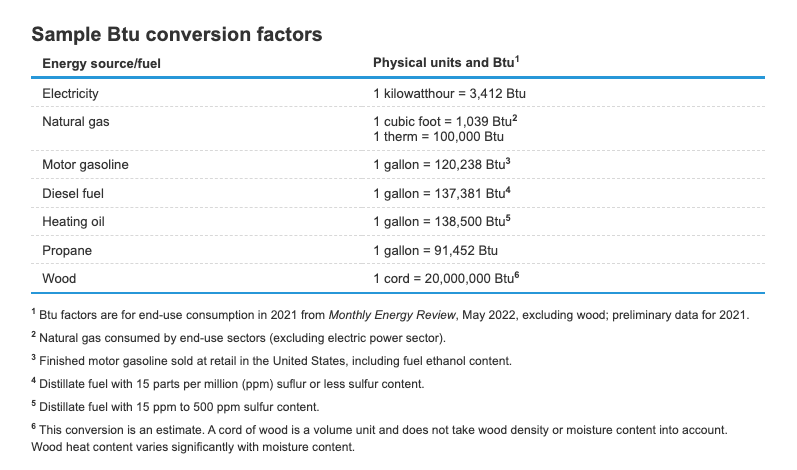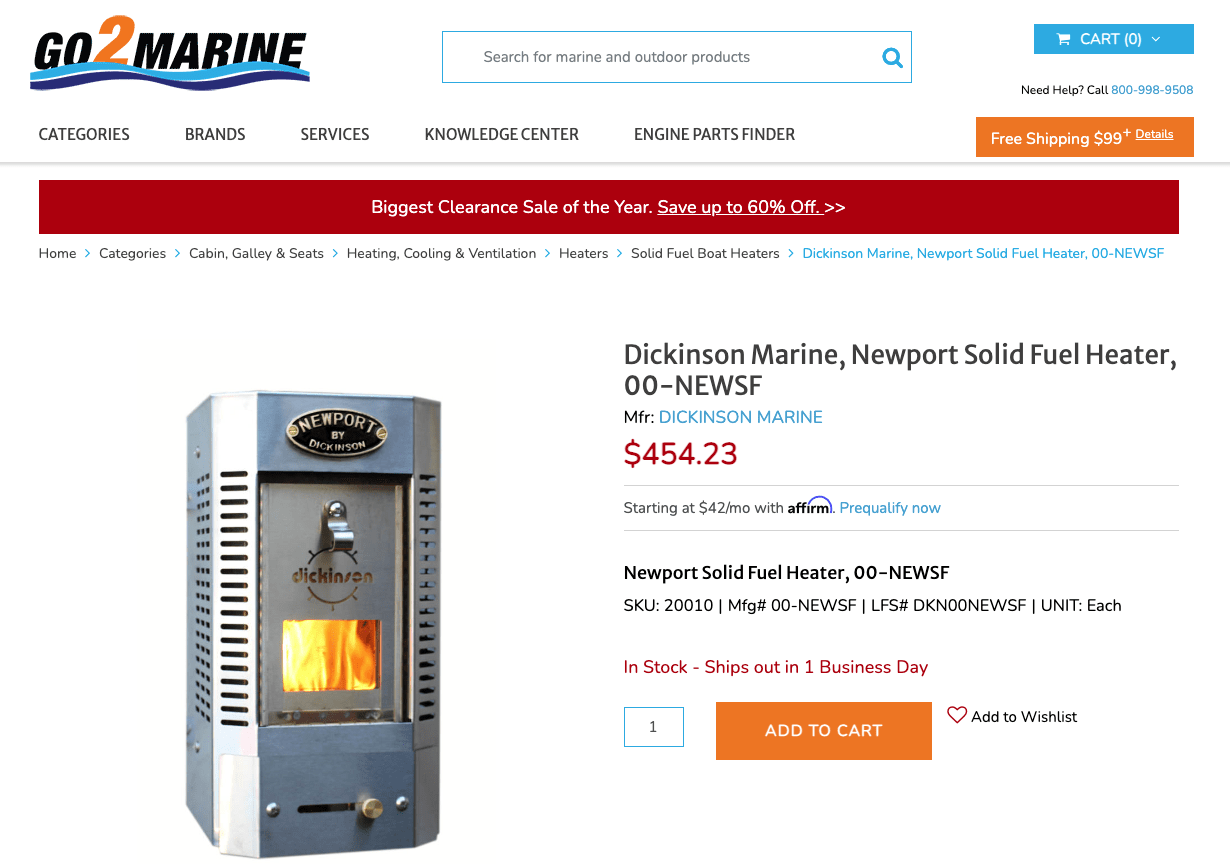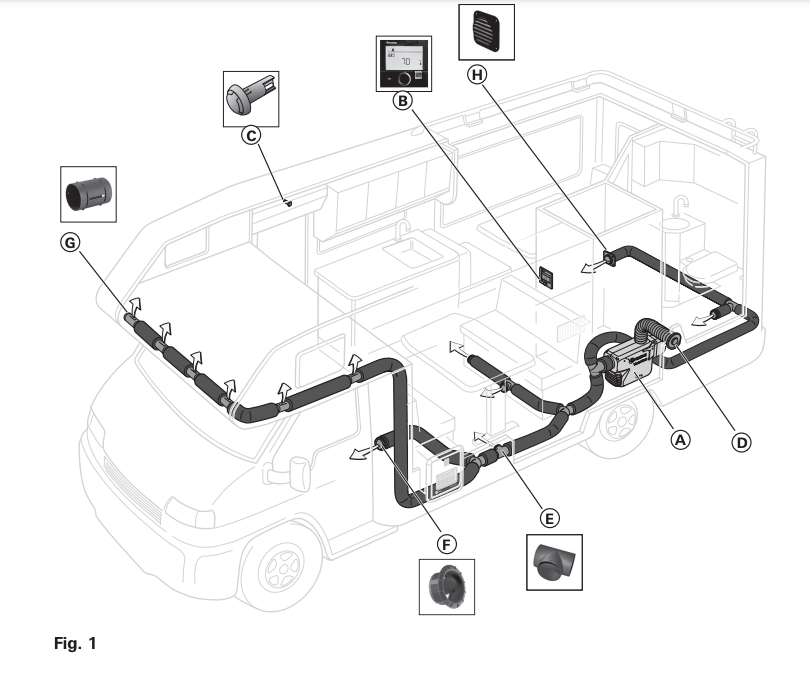Heating Solution for RVs and Campervans
Executive Summary
-
- This covers a solution for RV or campervan heating.
- There are a lot of options, and this article helped me keep the different options clear and supported my decision-making.

Introduction
This article covers essential features of a heating solution for RVs and campervans.
Small Inexpensive Heaters
This is one of the few videos that explain the negatives of this very popular heater. The video explains that his type of heater is a very short-term solution and not for people that live in RVs or campervans in cold climates for long periods.
I have the smaller version of this heater, called the Little Buddy. And I am not much of a fan of its design.
- First, it uses a lot of propane.
- Second, it is not supposed to be left on when one is sleeping. However, heat dissipates quickly in a vehicle due to the small amount of insulation. A heater that can’t stay on is not particularly useful.
- Third, the heater design means one must be careful not to get too close to the heating element.
- Fourth, it has no fan, so it takes a while for the heat to be distributed from the source throughout the campervan. This means there is a long lag before the campervan is warmed. Some of the larger versions of this do have a fan, but some do not.
Heaters With No Fan?
Many heaters do not have a fan. This means that the heat must move around through convection rather than being pushed by a fan. This is going to increase the time it takes to warm the entire cabin every time it is run. Secondly, it means the heat will always be inconsistently spread throughout the cabin.
My Conclusion On Inexpensive Heaters of the Buddy Design
My overall observation is the same as this video: these are inexpensive but short-term solutions. They are for people who are only occasionally in cold climates. I have used mine perhaps around five times. I prefer to just add more blankets rather than bring out the smaller version of this heater.
The Importance of Keeping the Cabin Warm
Even at below freezing, it is not difficult to keep warm under blankets or a sleeping bag. However, the problem is that when the overall cabin is cold, it dissuades a person from getting out of bed. So, it is very important to have the entire cabin warm to use it as designed. My biggest issue with cold climates without heating is not the nighttime temperature (although of course, it depends upon how cold that gets) but the daytime temperature, as once out of bed, one is exposed natural temperature of the cabin.
The Problem With Closed Doors for an RV or Campervan
Another problem with cold climates is that there is a necessity to keep the doors closed to keep the heat in. However, the problem with this is that one of the nice things about a campervan or RV is to open the doors to get airflow. I have not spent long periods of time in a cold city. However, when I have spent time in a city that is too hot, I often end up spending the day at a Starbucks or library.
The issue of constant cold weather for months on end might mean finding places outside the campervan that are heated throughout the day. Without that option, one is stuck in a campervan or RV without the ability to open the doors. This degrades the experience of being in the campervan. Being in a perpetually closed-door campervan might promote me to add a window to the side door. This way I could see out even if the door is closed. Of course, one also loses heat through a window, although not as fast as through an open side door. At night, all windows must be insulated.
There is no way around the fact that this is a negative. But as I have concluded that I need to move away from southern US states, it means acclimating to living in colder climates.
Long Term Versus Short Term Expense
This heater is inexpensive. However, it has low efficiency and uses around a bottle of propane per night. So the cost in the short term is low, as this heater can be purchased for around $150. However, in one month, one would go through about $300 (just my rough estimate) dollars per month in the winter if a large 20 gallon or larger propane tank is used.
In winter in a northern climate city, the heater must be used throughout the day, but less during the day than at night.
Having a Heater Than Can Work Independently and All Night Long
One problem with less expensive solutions is that they normally cannot run through the night. This is another example of an inexpensive solution.
This solution means using the burner on a stove. A modification of this is by adding an attachment.
This is a test using an attachment. However, notice how quickly the temperature declines as soon as the burner is turned off. In an uninsulated shell with windows used for the test, the temperature significantly drops in 30 minutes. In a better-insulated vehicle, this will be longer, but I have noticed, doing my own testing, that the heat seems to dissipate from an insulated campervan in a few hours.
This is not comfortable. This was also an excellent demonstration. As soon as I saw this video, I immediately knew this solution would not work for me. It would mean constantly stopping and starting the burner. During the day, the burner can be left on. But one has to leave the campervan occasionally, and one does not want an unsupervised flame burning when one is not in the campervan. Just the maintenance of this approach is a problem. This is a “workaround” solution that is more for very infrequent usage.
Furthermore, as this is leveraging a design used to cook, it’s unlikely this approach will efficiently use propane as a heating purpose-designed solution.
This video gives a good explanation of different heating options.
Different Fuel Sources
I found this comparison at the website ETA.

Propane and diesel are the most popular types of fuel for heating, but diesel is much more energy dense than propane. Diesel is also superior to gasoline.
I would like to use Diesel, but I have a gas van, and unless solid fuel is used, normally, the furnace is connected by a line to the vehicle’s fuel tank. Notice also that diesel is so BTU intensive that it has nearly the BTU of heating oil, which of course, is selected because it is so perfect for heating.
The Problem With Heaters That Have No Air Outlet
Any heater that does not have an air outlet is a problem. First, it means the condensation builds within the van. This is a problem as it both decreases comfort and increases the likelihood of mold.
Dickenson Solid Fuel Furnace
Dickenson makes furnaces that are designed to be used in boats but can also be used in RVs, campers and vans.

Dickenson Marine is better known for their propane and diesel heaters. Still, they also make a solid fuel heater, which provides very flexible options on fuel sources and is also very well-priced for a high-quality unit.
Here is charcoal being used as a fuel source.
This quote is from the YouTube video.
This is a multi-fuel stove that can burn wood, pellets, presto logs, coal and yes charcoal to heat up small spaces. Originally designed for luxury boats Dickinson slowly has been carving a niche into the tiny house community. Jon and Charles did not like the idea of propane as a fuel source but were very interested in the renewable energy possibilities that were provided by this unique, micro wood stove.
This video shows how the furnace works.
This goes over the propane version of this furnace. Notice that the propane furnace has glass in front of the door, whereas the solid fuel version does not.
This video points out that the furnace is sealed. There are two pipes in the chimney, and the air is pulled in from one of the pipes and then pushed out through the other pipe.
This is not a Dickenson furnace. It is called a Cubic stove, but it is a solid fuel furnace and shows how nice it is to have a wood or solid fuel furnace. However, this furnace is not sealed, and the presentation explains his air vent must be kept open.
Hardwoods and dry woods give the longest burn time and are the cleanest to grow. His favorites are oak and apple wood.
The overall experience of the solid fuel stove seems to be the best of all the options.
- The heat is noted as dry.
- The heat is good at drying out wet items because of this. So people will hang wet items near the furnace’s chimney.
- The flame is nice, particularly at night.
This video also shows how to install the furnace.
Truma Varioheat
The Truma Varioheat is a high-quality gas heater that has the following pros and cons.
Pros
- It looks very high quality, and tends to be installed in more expensive RVs.
- It has a powerful fan.
- The fan is variable, and can be turned down for a night of sleep.
- It has an air outlet making is safer than a heater without one.
- It is efficient with fuel.
- It uses gas, and runs cleaner than diesel.
- It seems like once set up, the operation is just limited to providing it with fuel and using manipulating a thermostat, just as in a house.
Cons
- The expense and the complicated installation.
- Gas is less energy-intensive. However, the costs of diesel are higher, so given that diesel is normally around 27% more expensive than gas — this is actually more than the difference in BTUs per gallon.
This video shows how the Truma Varioheat works.
This video explains how gas heaters are lower maintenance than diesel; this makes sense as diesel is a dirtier fuel. So — diesel is a better fuel for heating than gas due to its higher BTU content. However, it also fouls the heater and is higher maintenance. Diesel heaters are inexpensive in large part because there are so many options from China that focus on making this type of heater. So to go with a gas heater, you pay more, but the maintenance is lower. Also, personally, I really hate diesel. I don’t like the smell of diesel; I don’t like diesel trucks idling around me. So if I can stay away from diesel options, I always will.
This video got me thinking that the heater could be installed in a van bed box, as this is actually within a bed frame.
This video reinforces some of the points from the previous video.

This graphic shows there is an intake (D) and output. The output can be routed through several locations by splitting the intake for more even distribution.
This heater is more efficient in using diesel or portable inexpensive heaters. So it is more expensive in the short term, but over the long term less expensive.
This video shows how this type of gas or diesel heater is installed. This is not the same as the Truma, but it is the same basic idea.
Solid Fuel Furnaces Are Too Much Work?
In this video, he proposes that wood furnaces are too much work.
I found this quote that describes this work.
I installed a cubic mini stove in my 31 ft sailboat. The problem I had was I needed to add fuel about every 1-1/2 Hours and after about 10 hours you needed to shut the stove down and clean out the firebox. Then you had a bucket of hot coals to dispose of. I finally replaced the cubic mini with a Dickinson Newport diesel heater with a day tank.
This does sound rather unappealing and a problem for overnight sleeping.
Where is the Company Truma Based?
Truma is sort of an odd company — they clearly have a very good product, but they are far less well-known than other companies that make heaters of this type in the US.
Truma is based in Australia. However, what is curious is that Truma does not appear to have much distribution in the US — which is odd as the US is the world’s number one market for RVing, van living etc. But this means one needs to order from online retailers based in Australia or in Europe and pay for international shipment. Most of the Truma business comes from RV manufacturers who install the unit during the initial build, and therefore Truma is not focused on the consumer market.
One retailer is RVOnline.com.au.
A second retailer is CaravanRVCamping.com.au.
I sent an email to the second retailer and learned that they don’t ship outside of Australia.
However, after checking more, I was able to find a Truma Varioheat on eBay. I found one in the US for $1750.
However, curiously I found them at a much lower price at a few UK retailers. I can’t explain the cost difference, but it is around $1150 at a retailer named Leisure Direct.
However, Leisure Direct does not ship to the US. So they said they would sell me the item but that I would have to manage the shipping. This is called hiring a courier. I checked the website Parcel2Go, and there are a lot of options. I found that for the approximate weight and package dimensions, the cost would be $112.47. However, adding more insurance would probably increase that cost to $150. $150 + 1150 = $1300. That is a lot less than $1750 on eBay. It would take 7 business days for Leisure Direct to make the package available for shipment and another 7 days or so for it to arrive in the US. So it takes more time to go this route.
Chinese Made Diesel Heaters: The Lower-Priced Option
This is a lower-cost option. This is a smart design because it is portable. A person could put this in a van or RV and not have to mount it. It could just be placed against the wall on the ground.
Some of these diesel heaters are very inexpensive, and this video does a great job explaining the pros and cons. This is also a good video that just explains how these heaters work. This is exactly how a video on this topic should be — a short intro with diving right into using the item.
I was extremely surprised by how cleanly this unit burned the diesel. Minimal fumes mean that the furnace is more completely burning diesel fuel. This is also a stand-alone unit, which provides installation benefits. It also has its own diesel tank. If you can’t tap into a diesel vehicle tank as you have gas, this allows you to run off diesel, which, as I showed in the previous comparison graphic, has more BTUs per gallon.
There are lower-end gas heaters like the NS 2000, but the Truma seems to be the only one that has a more “sleepable” fan noise. The NS 2000 has only one fan speed, and I found that too noisy to either sleep through or, in fact, to even work on a computer next to it.
This video does a good job of explaining the different options at different prices.
The MaxSpeedRod makes a diesel heater that is inexpensive and can be seen at this link.
https://www.amazon.com/maXpeedingrods-Control-Display-Muffler-No-Punching/dp/B08RD4Y378/
Here are a few reviews.
Bought to replace a broken espar for my semi, works amazing have not had any issues with it all winter and it runs 24/7 during the week keeps a 60in bunk and cab at 65 degrees on low once the area is heated up install wasn’t to bad overall amazing product for the price bought another as a spare.
And this one.
Currently working with seller to hopefully get it working, it worked great for the first few days and then stopped working.
Hopefully I will be able to update this review with a working unit…
And this one.
Little smaller than I thought but it’ll cook you right out of the camper
My Synopsis of Chinese Diesel Heaters
I get the feeling that these diesel heaters are a great value, but I am concerned with their reliability, and also, while I love the improved BTU of diesel, I am not interested in dealing with the maintenance. So due to gas’s lower energy density, the cost of heating will be higher, but the maintenance will be lower.
My Price Orientation
Also, price is lesser of a concern than reliability and quality. The better the heating system, the more time I can spend outside of the “goldilocks” zone of the Southwest during the winter.
- Furthermore, disruption of heating while in a cold climate would immediately force me into a hotel. Just a few nights in a hotel will cover the cost of a higher-cost solution.
- I also want the lowest maintenance solution that I can find. I have already incurred substantial time costs in just researching this topic. I will also incur probably a 1/2 day at the very least installing the heater I buy, and I will need assistance from a family member, consuming their time as well as I am not handy with things like mounting, cutting holes in a van wall, basically doing the mechanical type of work.
Installation
I may want to install the Truma myself. One reason for this I have an idea of where to place it, and I want to be able to service it or troubleshoot it if I run into issues. I also have a van filled with personal items and don’t want to have people I don’t know in my van as it will take a lot of time to clear out my van. This is the disadvantage to having any work done on the interior of a van — as it is your house.
Conclusion
Currently, Truma is in the lead for my purchase decision. There is a large price discrepancy between buying from eBay and buying from UK distributors, making it seem to make more sense to purchase the unit from the UK distributor.
How I Progressed Through This Analysis
I started this process thinking I would buy the Dickinson solid fuel furnace due to its simplicity, multiple fuel options, ease of installation, relatively low cost, and reliability. I really thought this would be the option I would go with. However, upon reading about the constant care and feeding of a solid fuel furnace convinced me otherwise.
Doing the Analysis “Twice”
The original version of this article was written in March of 2022 and I added considerably to it the second time around.
At that time, I concluded the Truma model was the best option.
Almost a year later, I revisited the analysis by just looking under the RV category at this site and finding my old article, which I had forgotten I had written. I was “re-introduced” to the Truma through my previous analysis. I then recalled all of the benefits. I finally agreed with my March 2022 conclusion and decided on the Truma.
What Caused This Analysis and Progress Towards Buying a Heater to Stop Last Year?
By late March, I was getting ready to leave Phoenix to go north as the weather warmed, and I basically forgot about the heating issue. Another issue I could not come to a conclusion on is how I would stay warm outside of the camper in the winter in cold climates. I was watching videos of winter in Wyoming and all the snow was a major turn-off. I would probably stay in Wyoming, Montana etc.. for the summer but come more south for the winter, so it would be colder than AZ, but not as cold as Wyoming, etc..
When I came back for the winter, I tested Southern New Mexico and found all the cities to be unacceptable. This is where I planned to spend winter, but it is not sufficiently warm in Southern New Mexico in the winter, so the plan would have never worked. I did not think to check how cold New Mexico is in the winter, as I assumed it would be more like Southern Arizona. But my drive through New Mexico lead me to conclude that nowhere in New Mexico is useful to be outside of a few mostly white cities like Los Alamos in the northern mountains of New Mexico. New Mexico is a very undesirable state overall.
Back in Phoenix for the Winter…Again
I spent time in Phoenix again for winter even though I already had concluded I did not want to come back to Phoenix again.
This clearly demonstrates how inertial will push us to repeat a pattern after we have already analyzed that the pattern should not be repeated.
The problem is tolerating cold climate is a pain — and so I naturally pushed that pain off into the future. I did not know that Southern New Mexico would be so bad that I basically only drove through it and did not spend time there.
I had to perform this analysis basically twice greatly increased my investment of time into this topic. Although I understand these options and how these heating systems work much better than I did last year.
Gas Versus Diesel Options
Both gas and diesel are very good options as they are both plentiful, and for vehicles, they can tap into the existing vehicle’s fuel tank.
For me, I ended up concluding that a gas heater is better for my preferences. I am always looking for the most reliable and low-maintenance solution to a problem. I call this the “AK-47 rule.” However, if one decides on a gas heater, the price will be much higher, but the quality is also much better as there are few very low-priced “aka Chinese” gas heater options.